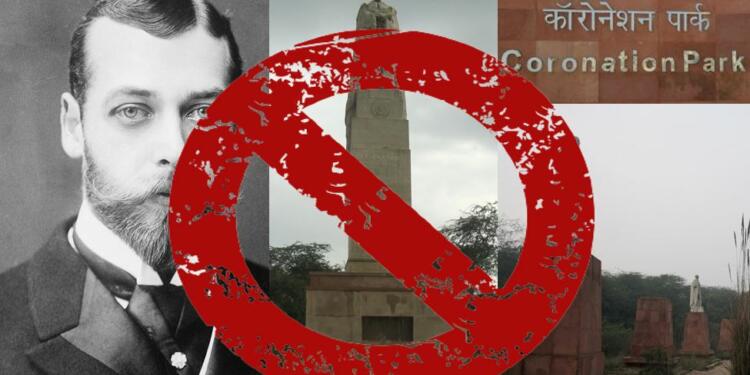The Coronation Park situated in northwest Delhi’s Burari area is a reminder of India’s colonial past and the imperialism of Britishers. The park houses a marble-made grand statue of George V, which was erected first at India Gate when the Britishers held their third and last Delhi Durbar.
The Delhi Durbars were grand events organised by the viceroys to mark the coronations of Emperors or Empresses. Hence, these were also known as the Coronation Durbars. The first two iterations were held in 1877 and 1903, respectively.
Shifting of the capital city:
The Durbar of 1911 marked the succession of George V, who was crowned as the Emperor of India. Moreover, the capital of the country was shifted from Calcutta (now Kolkata) to Delhi. This was the only ceremony where the Emperor himself attended the ceremony. The Emperor and the Empress reached Delhi on the 7th of December, 1911.

(PC: www.iwm.org.uk)
The statue initially used to be in the east side of India Gate under a canopy from where it was moved in the mid-1960s. It now sits opposite the obelisk called the Coronation Memorial, which commemorates the 1911 Durbar, when the British monarch laid the foundation stone for the new capital city of New Delhi.
Also read: The real reason why British quit India in 1947
Following India’s independence in 1947, the park became the final resting place for some of the statues of former British kings, governors, and officials of the British Raj. The other statues, which all originated in Delhi, stand arranged in a semicircle around George’s statue. They are thought to be those of Sir Guy Fleetwood Wilson and viceroys Lord Willingdon, Lord Irwin, and Lord Hardinge.
Park has turned into a swampland:
According to a recent news report, the park has been in appalling condition and has practically turned into a swampland. However, given the fact that it celebrates the tyrants who ruled unjustly upon the people of India, it seems fitting that the resting place of their statues has been neglected.

In the USA, there has been a growing trend of removing statues of Confederate leaders and it has found acceptance amongst the masses. Why should India not take a leaf out of the same book and replace those statues with one of our freedom fighters who laid down their lives to break the shackles of colonialism?
Reported by TFI recently, in Andhra Pradesh’s Guntur district, a tower named Jinnah Tower is still been paraded as a tourist destination, despite the obvious, glaring, and shocking lack of empathy in naming it after a leader whose one decision led to the butchering of thousands of Hindus.
Read More: Guntur has a ‘Jinnah’ tower. IT NEEDS TO BE DEMOLISHED
No need for the statue:
George V forced Indian soldiers into World War I; it was under his name that General Dyer carried out the macabre massacre at Jallianwala Bagh and yet we continue to revere him and the other monarchs of the British Raj for their vanity driven projects. Delhi Durbars were a fanciful way for the Britishers to project themselves on the Union of India.
Their statues do not deserve a place in modern India and especially in the capital city. Period. If one wants to know about history and the unadulterated truth about George V, it can be written in history books. However, there is no need for a statue to educate the masses about the same.































even VT used as initials in all Indian commercial planes shalll be removed. it is outrageous that VT is still used